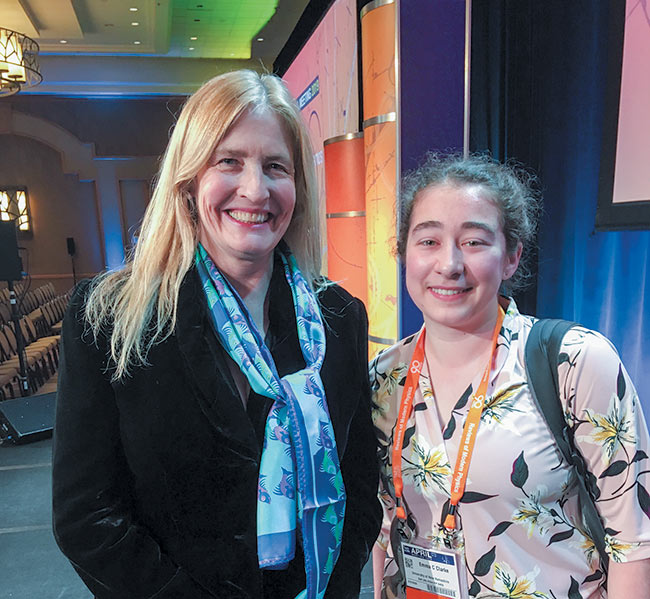Where Distinct Physical Scales and Geography Meet: Quarks to Cosmos 2019
Where Distinct Physical Scales and Geography Meet: Quarks to Cosmos 2019
The American Physical Society April Meeting
After packing up my things and getting ready for yet another flight during my senior year as a physics major at the University of New Hampshire, I made my way to the APS April Meeting 2019 in Denver, Colorado. I arrived at the “Mile High City” (Denver is 5,280 feet above sea level) the evening before the meeting commenced. Travelling by taxi from the enormous Denver airport to my hotel, I looked out the window and carefully observed my surroundings. The sides of the roads were lined with snow fences that had collected tumbleweeds. The landscape appeared flat for many miles; however, looking out toward the horizon I could see the outlines of mountains. Located at the boundary between the Great Plains to the east and the Rocky Mountains to the west, the capital of Colorado is a populous modern city situated between two distinct geographic features. I couldn’t help but think that the variety in the landscape reflected the range of physical scales explored at the “Quarks to Cosmos” meeting.

The first day of the April Meeting began with a session titled “Physics and Society.” The talks in the session reviewed disruptive energy futures (Amory Bloch Lovins, the Rocky Mountain Institute), the role of science and science advisors in American politics and the White House (Kirstin Matthews, Rice University), and the role of physics and physicists in social media (Katie Mack, North Carolina State University). All of these topics are highly relevant to modern physicists, as well as the public, and provided the audience with perspectives on our work within the larger context of society.
There were several other sessions throughout the week that focused on intersections of physics and society. One such session I learned from was “Stereotype Threat: What is it, and what to do about it?,” which discussed gendered performance in introductory STEM courses. Timothy McKay, a physics professor at the University of Michigan, presented an analysis on how courses are taught and how this affects student performance. Beyond these sessions, there was an abundance of sessions dedicated to the latest scientific research in physics fields falling under the blanket of quarks to cosmos.
Not all of the sessions at the April Meeting were about research. For example, at “Lunch With the Grads,” a Future of Physics Days event, undergrads chatted over lunch with a panel of graduate students. Lunch breaks were also a great opportunity to explore the exhibits and vendors. The exhibit table that was arguably the most popular among undergraduates was that of the Chandra X-Ray Observatory. With provided virtual reality goggles, viewers were able to look out from the center of our galaxy and observe the effects of massive stellar giants and their winds.
A personal highlight for me was Katherine Freese’s public lecture on dark matter in the universe. Based on a rough estimate using a show of hands, about half of the audience members at the lecture were from the general public. This was an impressive turnout showcasing public interest in science. After the lecture, I was excited to have the opportunity to meet Dr. Freese. I read her book, Cosmic Cocktail, when it came out on shelves several years ago.
After a solid few days packed with interesting physics, presentations, and social events, the April Meeting 2019 came to a close. I am thankful that I was able to experience this conference. I returned to my university with more knowledge and insight on physics and the physics community, as well as some handouts and swag to share with my SPS chapter. My experience at this meeting was invaluable, and I hope to attend again and encourage other students to attend meetings as well.
